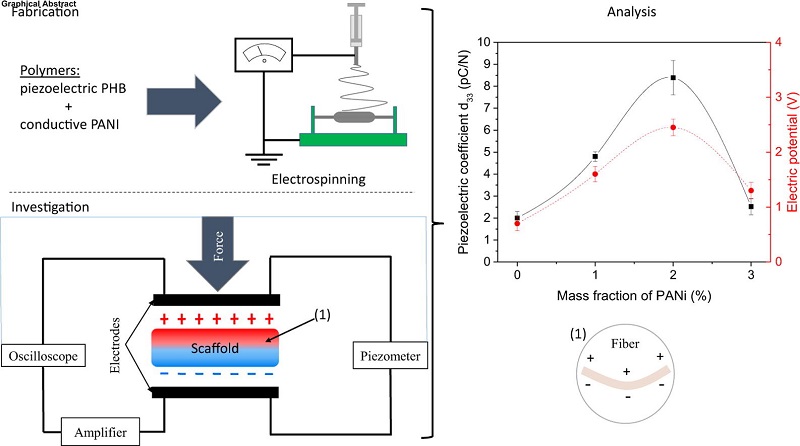In Tomsk Polytechnic University, scientists from Physical Materials Science and Composite Materials have obtained a biodegradable piezoelectric polymer for regenerative medicine. Under mechanical exposure, the novel polymer is capable to generate electric charge. The charge helps to activate the functional characteristics of cells, i.e. to stimulate tissue regeneration. The study results were published in Materials Letters (IF: 2.572; Q2).
 Photo: A piezoelectric biodegradable polymer
Photo: A piezoelectric biodegradable polymerPiezoelectric materials can generate charge without external sources of power. The сharge is formed on their surface under external mechanical exposure, i.e. if the materials are compressed, twisted, or squeezed. Now piezoelectric effect is widely studied for application in regenerative medicine as previous studies have shown that piezoelectics enhance tissue regeneration. The сharge on their surface interacts with the charge of cell membrane and this electric pulse stimulates functional characteristics of cells. Using piezoelectrics we can even control living cells by attracting and moving them under the charge exposure.
The co-author of the study Roman Chernozem (MSc.) from Physical Materials Science and Composite Materials says: ‘The strongest piezoelectrics are undegradable. This is one of the key properties for regenerative medicine. The material must be degradable so as to dissolve gradually in the body and to be replaced by new cells. Otherwise, patients need another surgery to remove implants.
Therefore, scientists search for materials which would be piezoelectrics and biodegradable.
We propose a hybrid material combining two polymers - a biodegradable polyhydroxybutyrate (PHB) and piezoleltric polyaniline (PANI, emeraldine salt).’
TPU researchers dissolved the polymers and fabricated hybrid biodegradable piezoelectric electrospun fibrous scaffolds from the solution. It consists of interwoven fibers of raw materials. The size of fibers may vary from 300 nanometers to 10 micrometers. The fabricated hybrid material presents a flexible and porous scaffold, i.e. the structure that mimics an external cellular matrix.
‘The experiments proved that materials become piezoelectric and piezoelectric constants increase in several times when we add only 2% of polyaniline from the total mass. This turned out to be an optimal combination since the higher the content of polyaniline the lower the piezoelectric effect. Additionally, doping polyaniline results in improved mechanical properties, i.e. the polymer stretches better. It is important if you use it for manufacturing wound dressings,’ notes the researcher.
According to the researchers, such hybrid polymer can be used as a material for bone implants to replace bone defects, restore nerves and as wound dressings.
‘Hybrid polymers surpass piezoelectric ceramics used in medicine in their mechanical properties, they are elastic. Surgeons can cut off the ‘patch’ with scissors on the spot for a bone defect of a particular patient,’ adds Roman Chernozem.
The Research Center Physical Materials Science and Composite Materials of the Research School of Chemistry & Applied Biomedical Sciences invite active students and early-career scientists with good English command to participate in biomedical materials research as part of the interdisciplinary multilingual team. Contact the research group supervisor Roman Surmenev via surmenev@tpu.ru .
